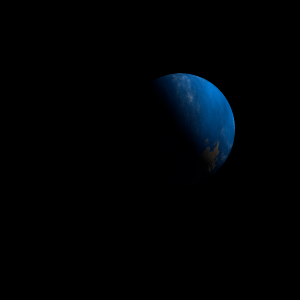|
|
Space Astro
|
Info for exoplanet "Chuza-gi"
| Scientific (actual) data |
|---|
| Planet | Kepler-1079 b |
| Planet status | Confirmed |
| Radius | 0.145 |
| Orbital period | 13.245 |
| Discovered | 2016 |
| Updated | 2021-02-05 |
| Tconj | 2454980 |
| Publication | Announced on a website |
| Detection type | Primary Transit |
| Alternate names | 2MASS J19581187+4546111 b, K02067.01, KIC 9304101 b, KOI-2067 b, KOI-2067.01, WISE J195811.86+454611.3 b |
| Star name | Kepler-1079 |
| Right ascension | 299.55° |
| Declination | 45.77° |
| Mag j | 11.422 |
| Mag h | 11.151 |
| Mag k | 11.056 |
| Star distance | 481 |
| Star metallicity | 0.21 |
| Star mass | 1.08 |
| Star radius | 1.36 |
| Star age | 6.61 |
| Star temperature | 5758 |
| Star alternate names | 2MASS J19581187+4546111, KIC 9304101, KOI-2067, WISE J195811.86+454611.3 |
| Wikipedia article | Kepler-1079 b |
Back
| |
| Fictional info (?) |
|---|
| Suggested name | Chuza-gi |
| Planet type | Cold planet |
| This cold planet is named after the deity Chuza-gi, the messenger of love and beauty.
Like Wake, Chuza-gi has been orbiting Kepler-1079 within Tamohyu Pu's orbit as an inferior planet, and never moves more than 9 degrees away from Kepler-1079.
Chuza-gi is the site of Olympus Gravis, the biggest volcano and second-highest known mountain in its solar system, and of Valles Marineris, one of the largest canyons in its solar system. |
| Atmosphere | Krypton | 67% |
| Nitrogen | 24% |
| Molecular hydrogen | 7.9% |
| Hydrogen | 0.54% |
| Sulfur dioxide | 1.7E-5% |
| Atmospheric pressure | 2.1 bar |
 |
| Moon | Kirahi Hapo | Huge almost round rocky planetoid |
| Fukyota'namyo | Medium-sized round oceanic moon |
| Tsuhya-po | Large slightly egg-shaped gaseous comet |
| Google search for Chuza-gi |
|
Website by Joachim Michaelis
|
|
|
|